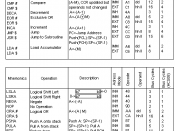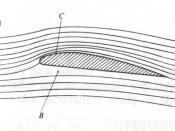INSIGHT
As I was listening to our professor discussing about instructions, I conclude that instructions are the commands that we apply to a certain problem. Instruction sets include the addressing modes and format. By using instruction set, we can be able to understand where to find or locate certain byte or string to the accumulator or stack.
While we were discussing an example in direct addressing in x86 architecture, our professor told us to define the instruction "cmp es: [0342], 1". It is 'compare extra stack'. As I was reviewing this instruction, I think that it compares successive or consecutive elements of 1. Also, it compares the value of [0342] to the value 1. I don't know if this insight is correct, but I've tried to review this instruction.
In my opinion, Cascaded Indirect Addressing requires large address space. Since it has the provision of multiple memory accesses to find operand, it is slower compared to other modes.
It is also the transferring not only one byte but more words or more than one byte at a time.
Examples of Direct Addressing:
MOV [0105], BX : Whatever the content of BX, it will go to the address of [0105]
ADD [0001], EDX : If the data register is filled up with data, we have now an extra data which is "EDX". Whatever the content of EDX and address, it adds
PUSHD [01234] : We have now a stack of data register
INC byte ptr [15AA] : We increasing and occupies the two memory address
ADD AX, [10E] : Whatever the line number [10E] contains, it will put on register AX
MOV AL, DS: [8088H] : Loads the AL register with a copy of the byte at memory location 8088H
MOV EAX, [150] : Moves the value of 150 into EAX...


